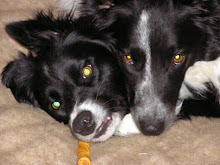Chapter Two: Defining Narrative
"The difference between events and their representation is the difference between story (the event or sequence of events) and narrative discourse (how the story is conveyed)." The Cambridge Introduction to Narrative
There was so much great stuff in this chapter that it's difficult to pick one or two highlights to share! I'll go first with the observation that "story" always moves forward in time regardless of the manner in which the narrative discourse presents it. The book used to exemplify this was one that I have read and loved, Time's Arrow by Martin Amis. (You can read my thoughts on it here.) Although the book is narrated completely in reverse time, it is dependent upon the reader's ability to reconstruct the forward movement of "story" to have its full effect. I remember clearly how alternately funny and horrifying it was. That technique was supremely powerful in that novel, and I don't think the story would have been nearly as impactful without it.
The second point I'd like to highlight is actually a question. What makes a story identifiable as the story it is? The author never actually answers that question, but uses it to feed our analytic skills. For example, what do we mean when we say, "It's a Cinderella story"? What are the events that make it a Cinderella story? At what point does it stop being Cinderella and become something else? What is it that distinguishes the actual Cinderella from "Cinderella stories"?
From here he goes into a discussion of constituent events (events necessary for the story to be the story it is) and supplementary events (events that could be removed and the story will still be reconizable as the story that it is). Because supplementary events are not necessary to move the story forward, asking yourself why they were included assists in interpreting the narrative.
Is your head spinning yet? In case it's not, here's another question that has scholars scratching their heads: Does a story exist before it is told? In other words, is a narrative a "presentation" that brings the story into existence, or is it a "representation" of something that already exists?
I am loving this book! It's shedding a whole new light on an activity I have always taken for granted. (Must be all those lightbulbs still going off over my head with every page I read.) I am thinking I'm eventually going to need to pick up The Cambridge Companion to Narrative










4 comments:
Yeah my head is spinning! I'm glad you're enjoying this though :)
Ladytink ~ It makes you think though, doesn't it? I'm just glad I don't actually have to formulate answers to those questions, only ponder them at leisure. There are advantages to self-teaching! :-)
Lezlie
YES, that last question got my head spinning just a little too fast! very interesting. Glad you are having fun.
Bkclubcare ~ Thanks! Yeah, that last one is a doozy. It's getting dangerously close to that mystical Land of Philosophy that triggers my inner "Deer in the Headlights". :-)
Lezlie
Post a Comment